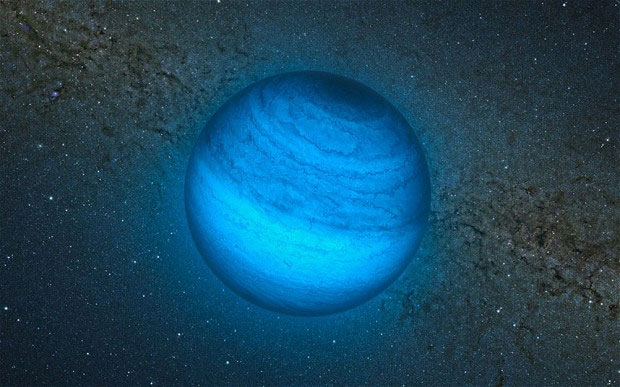Discovering the planet
Scientists at the Montreal University (Canada) first identified a lonely planet or 'homeless planet' because it did not orbit a star's orbit.
The planet, named CFBDSIR2149 , is 7 times larger than Jupiter, with a temperature of about 400 ° C, which is 50-120 million light-years away.
Scientists believe that this is part of a group of about 30 very young stars called AB Doradus mobile group.

Planet CFBDSIR2149
The planet floats freely, has no gravitational relationship, but still has special standards such as mass, temperature and age to be identified as a planet.
Planet CFBDSIR2149 was discovered thanks to the data of the huge telescope at the Southern Europe Observatory and the Canadian-France-Hawaii telescope and the collaboration of French scientists.
Although astronomers have known for a long time that the "homeless" planet exists, the search process over the past decade is like " finding a needle in many haystacks". This is the first time they have observed it.
The astrophysicist at the University of Montréal Étienne Artigau said: ' We have observed hundreds of millions of stars and planets but only discovered a homeless planet near us.'
However, some astronomers do not agree on the classification of the aforementioned space objects or planets because these objects do not have nuclear reactions in the center, called Brown. dwarf.
- The truth after each name of the familiar planets
- Discovering the planet can survive life
- Discovering the planet is very similar to the earth
- Miraculously discovering the 'forbidden planet' in the Solar System
- Discovering new planets is 13 times larger than Jupiter
- Discovering two planets
- Discovering the planet in paradox
- Discover a new planet 13 times larger than Jupiter
- Discovering the twin planet of Jupiter
- Discovering strange planets that have 4
- Discovering the planet has a year of 18 hours on Earth
- Discovering the planet has never been long before
 Van Allen's belt and evidence that the Apollo 11 mission to the Moon was myth
Van Allen's belt and evidence that the Apollo 11 mission to the Moon was myth The levels of civilization in the universe (Kardashev scale)
The levels of civilization in the universe (Kardashev scale) Today Mars, the sun and the Earth are aligned
Today Mars, the sun and the Earth are aligned The Amazon owner announced a secret plan to build a space base for thousands of people
The Amazon owner announced a secret plan to build a space base for thousands of people